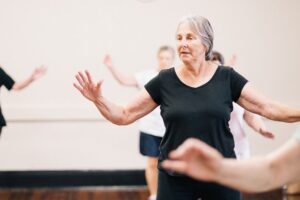
Arthritis is a condition that affects the joints in the body and can lead to pain, stiffness, and swelling. It may seem counterintuitive, but exercise is actually helpful for people with arthritis. The American College of Rheumatology (ACR) recommends exercise as an important part of arthritis treatment as exercise can enhance joint flexibility, lower pain and stiffness, and increase muscle strength. In this article, we explore how exercise helps manage arthritis symptoms and improve overall quality of life.
Arthritis is a condition that affects the joints in the body and can lead to pain, stiffness, and swelling. It may seem counterintuitive, but exercise is actually helpful for people with arthritis. The American College of Rheumatology (ACR) recommends exercise as an important part of arthritis treatment as exercise can enhance joint flexibility, lower pain and stiffness, and increase muscle strength. In this article, we explore how exercise helps manage arthritis symptoms and improve overall quality of life.
One of the key benefits of exercise for people with arthritis is pain relief. Exercise helps to reduce inflammation in the joints, which can help to alleviate pain and stiffness. Additionally, exercise helps to release natural painkillers produced by the body called endorphins which can reduce pain and improve mood.
Exercise also helps to improve joint function and mobility. When you exercise, you are moving your joints through their full range of motion, which helps to keep them flexible and lubricated. This can help to prevent joint stiffness and improve joint function over time.
In addition to physical benefits, exercise can also have a positive impact on mental health. Exercise can help to reduce stress, improve mood, and increase self-esteem. It can also provide a sense of accomplishment and control which can be empowering.
So, you may be wondering, which types of exercise should you do? Exercises that are beneficial for people with arthritis include low-impact aerobics, strength training, and stretching. Low-impact aerobics, such as walking, cycling, swimming, and water aerobics, are excellent for improving heart health and increasing heart rate without putting too much stress on the joints.
Strength training exercises are great for building muscle and improving joint stability. Examples of these exercises include weight lifting, resistance bands, and bodyweight exercises like push ups and squats. It is important to start with light weights or resistance bands and gradually increase the intensity over time to prevent injury and ensure that you are able to perform the exercises safely and effectively.
Also, stretching is an important part of any exercise program for people with arthritis. It helps improve joint flexibility and reduce stiffness. Stretching exercises can include yoga, pilates, and other flexibility exercises that target specific joints and muscles.
It is important to note that exercise should be done in moderation and with guidance from your rheumatologist where you can work together to develop a plan that is tailored to your individual needs and abilities. In addition, it is important to stop and rest or modify your exercise routine if you experience pain or discomfort during exercise.
Exercise is an essential part of arthritis treatment that can help to improve joint flexibility, reduce pain and stiffness, and increase muscle strength. Exercise can also have a positive impact on
mental health, reducing stress and improving mood. Low-impact aerobics, strength training, and stretching are all beneficial types of exercise for people with arthritis. By incorporating exercise into your daily routine, you can improve your overall quality of life and manage arthritis symptoms more effectively.

